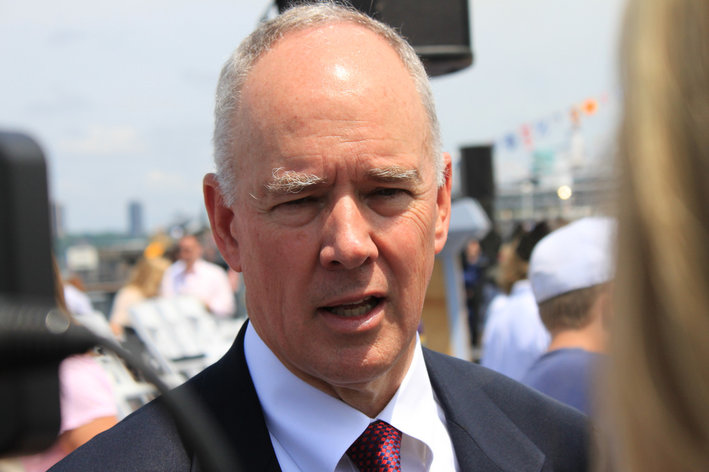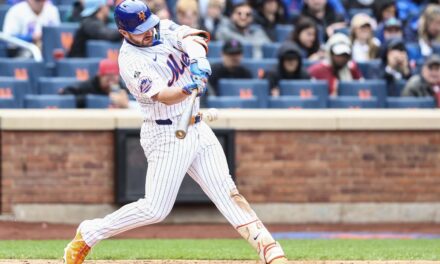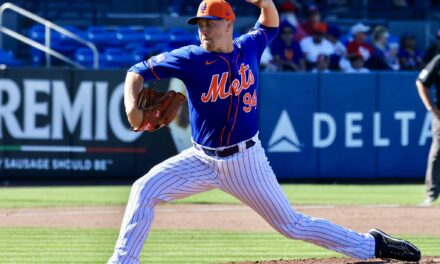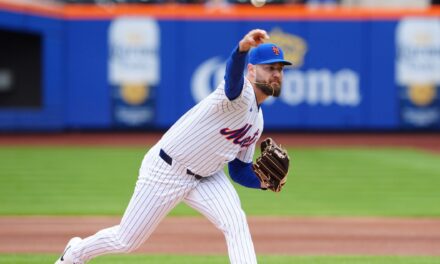Let me first go on the record to say that I would much rather have Mets GM Sandy Alderson set an expectation of 90 wins, as opposed to, say, 90 losses. For teams that look to overachieve, the first step is believing you are better than you actually are. And when it was first reported, my initial thought was “well, Sandy is a smart guy, so maybe there is something to this.”
But you know who else is smart? Vegas. And the current Over/Under on Mets wins in 2014 is set at 73 ½. I’ll give the team the benefit of rounding up, and call it 74. And that is exactly the win total from last year. I wouldn’t think it is common to lose a potential Cy Young candidate and staff ace for the year and see your projected wins go up. But the team did make some moves in the offseason, and the bookmakers have basically called it a wash with the absence of Matt Harvey.
So, in order for Sandy’s proclamation to become reality, the team needs to pick up 16 wins vs. last year. 16 wins that don’t appear to be there according to folks whose business it is to know such things. For every team, though, there is an upside number when trying to project a season. An “if all things break right” win total. Could that number be 90?
Looking at 2013 in detail, what emerged was a year clearly defined by four micro seasons:
- Horrendous Start- Opening Day-June 17th: Record 25-40
- A Burst of Energy :June 18th-All Star Break: Record 16-10
- Injuries, Injuries: All Star Break-August 28th: Record 18-22
- Playing out the String: August 29th-End of Season: Record 15-16
Below, I detail out some key highlights of each micro season and where the opportunity lies to pick up (or lose) wins this year.
1. Horrendous Start
The Mets dug themselves in a hole early, and were already 10 games under .500 by the third week in May. By the end of Micro Season One, the team was 15 games below .500. This is despite Harvey putting up Cy Young worthy stats throughout this stretch.
The culprits are not a surprise to anyone. The production from first base was beyond abysmal. The 1B slash line from Ike Davis (54 games) /Justin Turner (13 Games) /Daniel Murphy (6 games) and Lucas Duda (1 game) was a putrid .194/.268/.273. Ruben Tejada was batting .209 before he hit the DL in late May. And the Mets record in games started by Jeremy Hefner and Shaun Marcum was 4-20 in that stretch.
Clearly, there is an opportunity to improve in this stretch in 2014. But how much? Davis and Tejada, as of now, are still projected to be Opening Day starters. What is it they say about repeating the same mistakes and expecting a different result? But I think it is safe to say the leash will be considerably shorter than 2 months. Unlike last year, there are better backup options for those positions than Justin Turner and Omar Quintanilla. And there is also room for optimism on the pitching front. While it is unfair to expect Bartolo Colon to match Harvey’s start from last year, the rest of the rotation should be much improved. Zack Wheeler could be a formidable #2. Dillon Gee was a much different pitcher at the end of last season than the beginning. That leaves Dice-K and Niese to improve on the Mets 4-20 record in games pitched by Hefner and Marcum.
Upside: +6 wins
2. A Burst of Energy
Micro Season Two of 2013 commenced with the call-up of Wheeler on June 18th. But it was far more than the debut of the prized prospect that led to a turnabout in fortune for the struggling Mets. Hefner was lights out in this stretch going 3-0 with a 1.91 ERA in 5 starts. Dillon Gee was consistent and provided depth. And Josh Satin provided some much needed stability at 1B with a 1.04 OPS by the Break.
2014 could shape up to be similar from a dynamics perspective, with an anticipated call up of Noah Syndergaard in the mid-June timeframe. Still, the .615 winning percentage from 2013 is probably as high an upside as we will get. It’s likely to even go down.
Upside: Even
3. Injuries, Injuries
Slow starts after the All Star Break have become something of a thing with these Mets lately. The last time they had a winning record from the Break through Aug. 1 was 2007. This is despite having an above .500 record going into the Break 5 times in this timespan. Last year, injuries played a key role in the six-weeks following the Midsummer Classic. Jon Niese, David Wright, Jeremy Hefner and Bobby Parnell all missed significant time during this stretch. And on Aug. 26th Matt Harvey was placed on the DL, ending his season. This period ends with the trade of Marlon Byrd to Pittsburgh two days later.
Injuries are always the wildcard in these projections, and the Mets don’t have a ton of depth. Since history shows us that .500 is even a reach after the Break, I’ll go with that for the upside:
Upside: +2 wins
4. Finish Strong or Playing out the String?
Projecting the final segment of 2014 is completely dependent on the results of the first 3. Will the Mets shut down Wheeler? Did the Mets improve their roster at the deadline? Did they sell off key assets? If the above upside scenario manifests itself, they will enter the September stretch with a record of 66-65. While a nice improvement, it would not put the Mets in an “all-in” scenario to finish the season. With the squad they had last year, they finished a respectable 15-16 in these final 31 games. I can see a couple of games of upside here, but realistically, they probably overachieved last year.
Upside: + 2 wins
Adding it together, an upside ceiling may be an incremental 10 wins, putting the team at 84. Still a considerable gap remains between this and the 90 thrown out by Alderson. And again, this does not take into consideration any potential downsides (injuries, players have down years, etc). Getting past 84 will likely require more talent, and getting 6 more wins from the options we have been reading about seems unlikely.
















